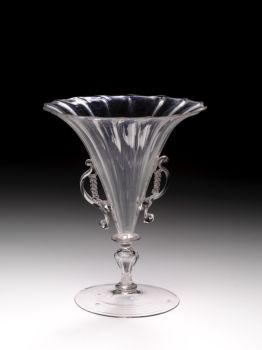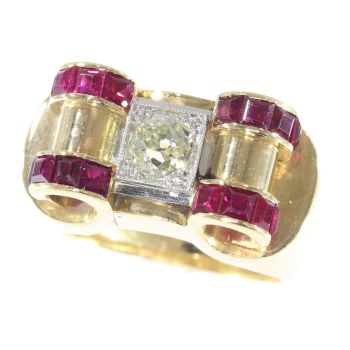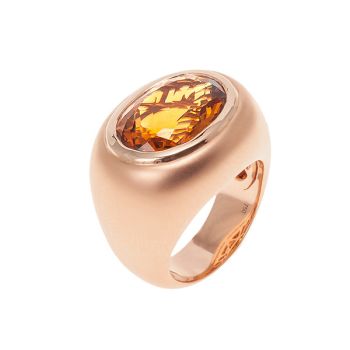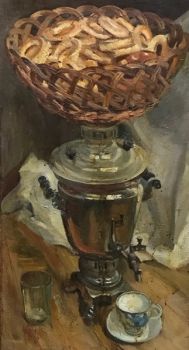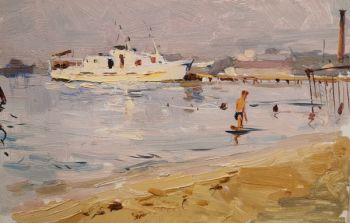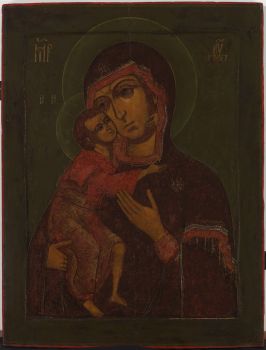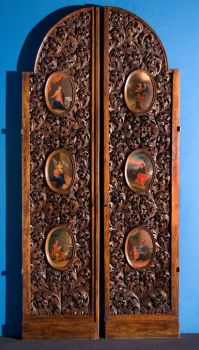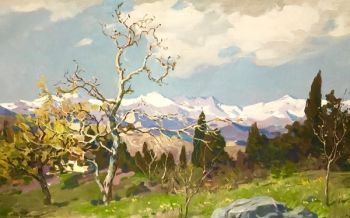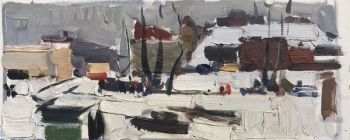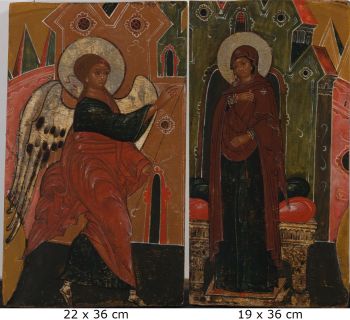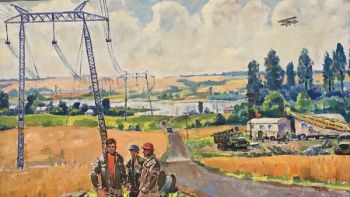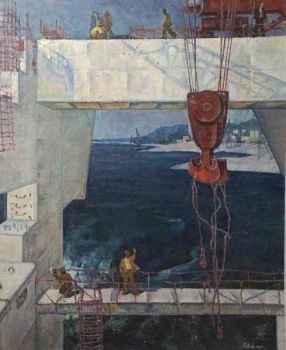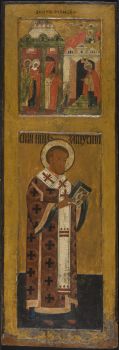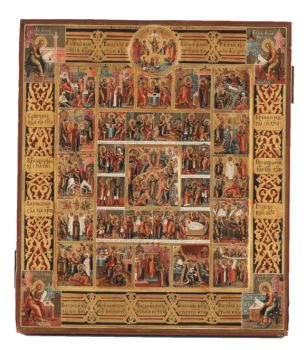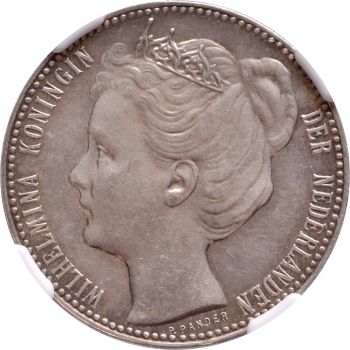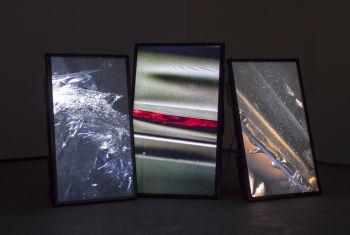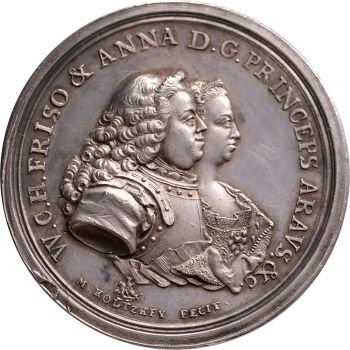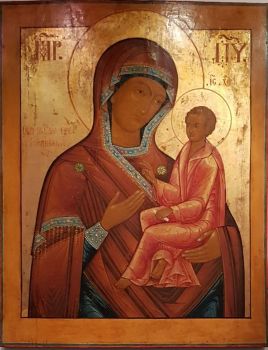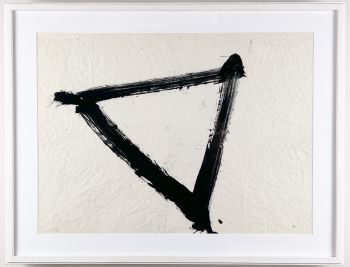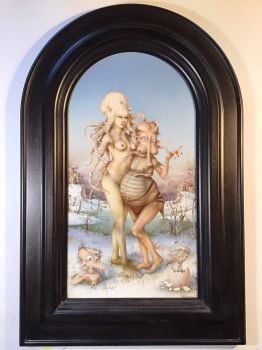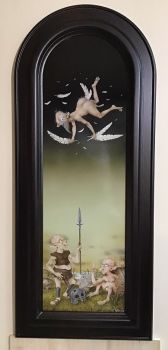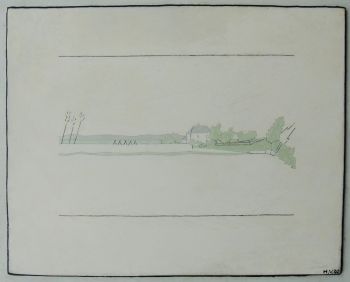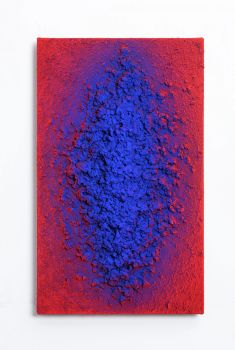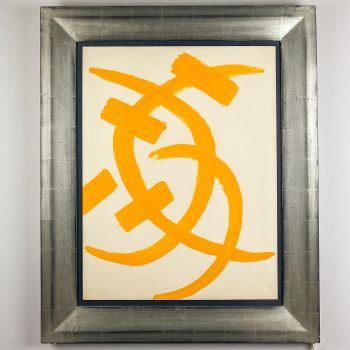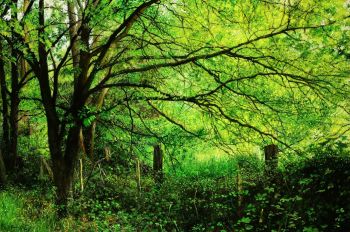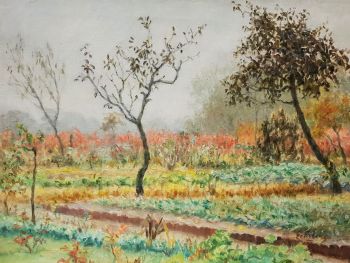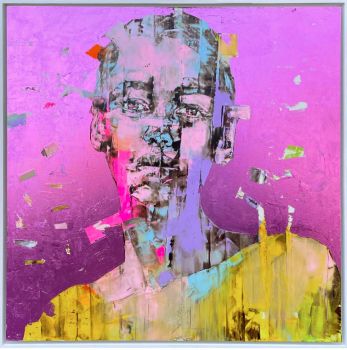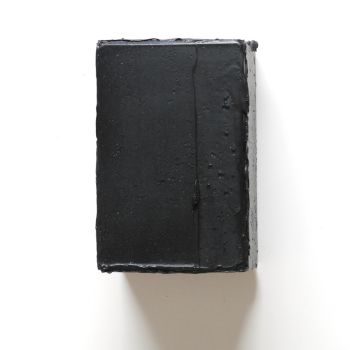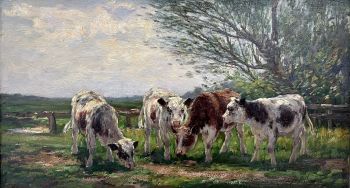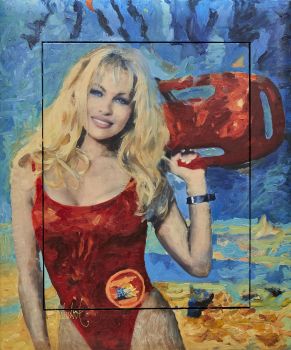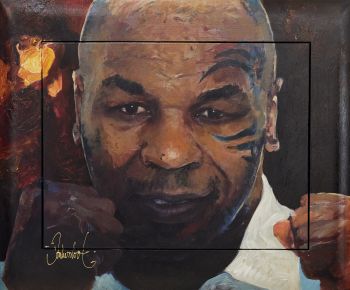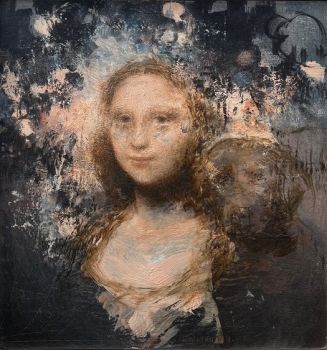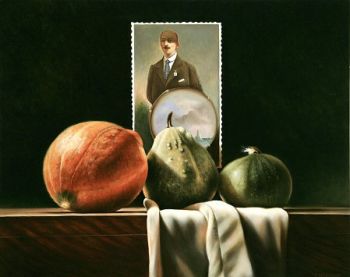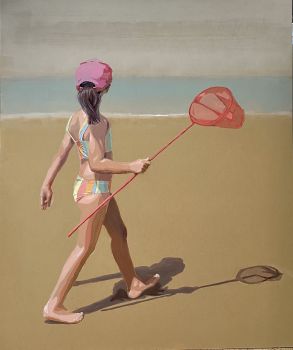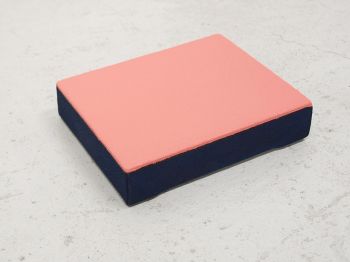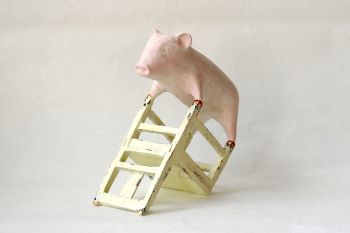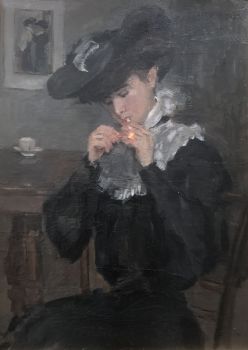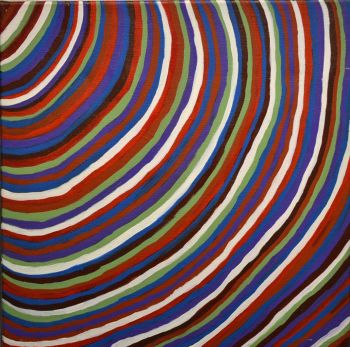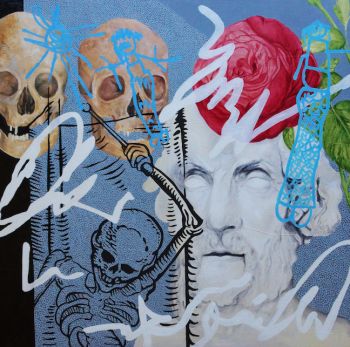Majestic Last Judgement icon, 18th century late 18th
Unknown artist
WoodEgg temperaPaint
140 ⨯ 106 cm
ConditionExcellent
Currently unavailable via Gallerease
Kunsthandel H.W.C. Dullaert Icons
- About the artworkHVB7312: Majestic Last Judgement Icon 18th century................................................................................................................................................... DESCRIPTION OF A MONUMENTAL RUSSIAN ICON DEPICTING THE LAST JUDGEMENT, END OF THE 18TH CENTURY:
Central Russian Last Judgment icon with a dizzying array of saints, angels, devils and sinners. Egg tempera on levkas on redwood panel. Dim. 140 x 106 cm. This Last Judgment icon dates from the end of the 18th century.................................................................................. ON THE ICONOGRAPHY OF THE FINAL JUDGMENT: Kuilsburg / Maurer / Seegers / Tchikvashvili (ed.), 2007 on pp. 220-221, says the following about the icon of the Last Judgment, egg tempera on wood, (see literature consulted): “The Last Judgement is depicted in the Byzantine world since the 9th century. In Russia this icon type entered in the twelfth century. The icon is placed in the west side of the church, the side where the light fades. On the same side usually also hangs “The Dormition of the Mother of God.” The Last Judgment shows, in great detail, the completion of salvation history. All evil is destroyed and the good is brought to completion. Details: on the upper left of the icon we see Jerusalem where the true cross is shown by Helena and Constantine. In the middle left we see some winged saints. Towards the middle of the icon we see apostles directing themselves to the Deësis. Here Christ is flanked by The Mother of God and John the Baptist, the archangels Michael and Gabriel and at the foot Adam and Eve. In the middle of the upper border of the icon the Lord of Hosts, the Lord of the Heavenly Powers, is depicted. Details: in the right top corner we see the archangel Gabriel throwing Satan and his helpers from the throne. Towards the middle we see the Holy Trinity. Right besides the Lord of the heavenly powers, we see Christ being blessed by his father. They are surrounded by angels of the highest order – Cherubim and Seraphim. Under the Holy Trinity we see a crowd of bishops directing themselves towards the Deësis. Under the Lord of the Heavenly Powers, we see the Deësis with the apostles on the left side and a group of bishops on the right side. The cloud colors of purple and blue dominate this part of the icon. The colors are associated with the character of the scene. Central part of the icon: The altar, the Hemateia, an empty throne with a cross plays an important role. It symbolizes the promise of Christ’s return. Below the Hemateia we see the scales of good and evil. These scales blows to the right side, which is the good side. The trumpets of the angels chase the black birds, symbols of death. In addition we see Daniel who has a vision, an angel shows him the last judgment. We also see Moses showing all the people of the earth – amongst others Indian Guru’s, Muslims with turbans and a Dutch man with a large black hat – the way to the promised land (The Hemateia – the empty throne). Meandering through the center of the icon we see a snake that is accompanied by texts which reflect the sins of mankind. The resurrection of the dead is symbolized by animals. The Sea and Earth giving back all the people who have died. We see, between the snake, the four monsters, from the Apocalypse, the seven headed dragon, the bear, the lion and a winged Griffin. In the lower left part of the icon we see Garden of Paradise. The three Archpatriarchs – Abraham, Isaac and Jacob – are depicted here with souls in their bosom – which are symbolized by little children. The trees behind them symbolize paradise. Saint Peter is at the gate with a key to help the souls of the righteous enter into the Garden of Paradise. They can thus return to the bosom of the arch-patriarchs. In the group of the Righteous we recognize, amongst others, Saint Basil and Saint Spiridon who is the patron saint of Corfu. Not everyone is unconditionally ushered into heaven; some have to deal first with the scourge column. A long procession of the damned is depicted by means of a chain revoked to hell; to the mouth of Hades. Amongst them are people from all walks of life. On the far left we see a devil trying to chase them. On the far right is the devil himself, Beelzebub. On his lap, we see the Antichrist. On the lowest border of the icon, we see a series of small depictions of various torments in hell. For every sinner, there is an appropriate penalty"............................................................................................................................................................................................................................................................... SPECIAL REMARKS ON THIS MONUMENTAL LAST JUDGEMENT ICON: A Last Judgement icon of this size and with such elaborate iconography is extremely rare. They can only be found in a few churches in Russia which survived the enormous wave of destruction of churches and church art that Stalin ( in the 1930’s) and Chroetsjev ( in the 1960’s) sadly organized. In this wave of destruction 90 percent of churches in Russia were closed and changed into beer halls, pig stables, storage rooms or factories. The icons and art that once graced these places of worship were destroyed. Some icons landed up in depots of museums and were only restored in recent years or are given back to churches and monasteries that are re-opened since the fall of communism in 1991.This Last Judgement icon must come from a large and rich church, monastery, or wealthy parish most likely in St. Petersburg or Moscow where there was a Western baroque influence. The garments of the numerous saints and sinners on this icon show a slight Western baroque influence that started to be popular in Russia’s big cities from the 17th century onward. The iconography however, follows the medieval tradition and is extremely elaborate. This Last Judgement icon is very well preserved and only the liturgical text in the right border of the icon ( circa 5 cm), and the catalog of punishment for deadly sins on the lowest border ( circa 10 cm) have been over painted in the late 19th century. This icon came to Western Europe in the early nineties (of the 20th century) when, under Boris Yeltsin, Russia sold its art treasures to get US dollars to survive. Since the early nineties this icon has been in a private collection in Gent in Flandres. Kunsthandel H.W.C. Dullaert has bought this icon from this Flemish collection and has had it professionally cleaned and preserved........................................................................................................................................................................................................................................................... BIBLIOGRAPHY: Kuilsburg / Maurer / Seegers / Tchikvashvili (ed.) Jan van Kuilsburg Onno Maurer, Gerdy Seegers and David Tcikvashvili (ed.), Russia Icons. Collection Vosyakov (Part I), Museum Flehite / Publisher Bekking Amersfoort 2007, pp. 220-221. - About the artist
It might happen that an artist or maker is unknown.
Some works are not to be determined by whom it is made or it is made by (a group of) craftsmen. Examples are statues from the Ancient Time, furniture, mirroirs, or signatures that are not clear or readible but as well some works are not signed at all.
As well you can find the following description:
•“Attributed to ….” In their opinion probably a work by the artist, at least in part
•“Studio of ….” or “Workshop of” In their opinion a work executed in the studio or workshop of the artist, possibly under his supervision
•“Circle of ….” In their opinion a work of the period of the artist showing his influence, closely associated with the artist but not necessarily his pupil
•“Style of ….” or “Follower of ….” In their opinion a work executed in the artist’s style but not necessarily by a pupil; may be contemporary or nearly contemporary
•“Manner of ….” In their opinion a work in the style of the artist but of a later date
•“After ….” In their opinion a copy (of any date) of a work of the artist
•“Signed…”, “Dated….” or “Inscribed” In their opinion the work has been signed/dated/inscribed by the artist. The addition of a question mark indicates an element of doubt
•"With signature ….”, “With date ….”, “With inscription….” or “Bears signature/date/inscription” in their opinion the signature/ date/ inscription has been added by someone other than the artist
Are you interested in buying this artwork?
Artwork details
Related artworks
Unknown artist
Dutchmen in Miniature18th century
Price on requestZebregs & Röell - Fine Art - Antiques
1 - 4 / 12Unknown artist
Russian icon depicting an extended Deesis1600 - 1650
Price on requestKunsthandel H.W.C. Dullaert Icons
1 - 4 / 24Unknown artist
Antique Russian wooden icon: Archangel Gabrielearly 17th
Price on requestKunsthandel H.W.C. Dullaert Icons
Unknown artist
Monumental wooden icon: Saint Nicolas of Mozaisk1600 - 1650
Price on requestKunsthandel H.W.C. Dullaert Icons
Unknown artist
Russian icon depicting an extended Deesis1600 - 1650
Price on requestKunsthandel H.W.C. Dullaert Icons
Unknown artist
UITGEBREIDE FEESTDAGENIKOON MET PASSIECYCLUS19th century
Price on requestHeutink Ikonen
1 - 4 / 24Unknown artist
Antique Russian wooden icon: Archangel Gabrielearly 17th
Price on requestKunsthandel H.W.C. Dullaert Icons
Unknown artist
Russian icon depicting an extended Deesis1600 - 1650
Price on requestKunsthandel H.W.C. Dullaert Icons
1 - 4 / 24- 1 - 4 / 24
- 1 - 4 / 12


